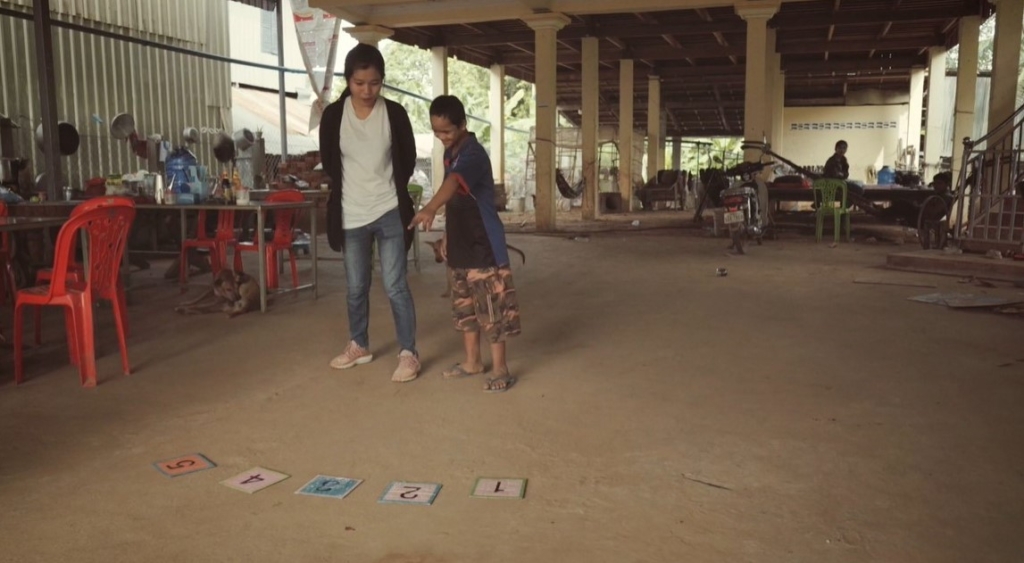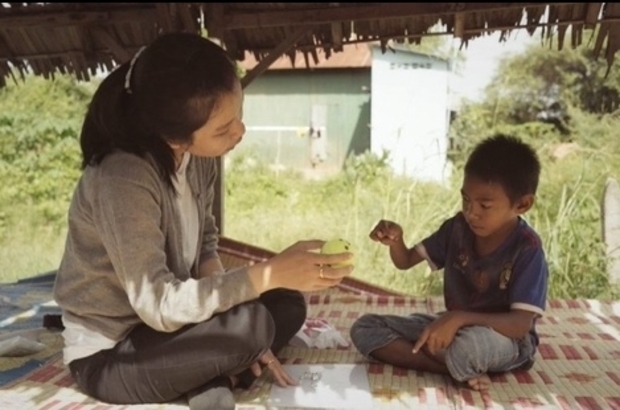FARIDA EL KAFRAWY reviews Caleb Yule’s documentary, Stories From Silk Island, which follows the lives of children with disabilities on the Cambodian Island of Koh Dach.
Silk Island sounds like the setting of a fairytale, but in reality, it refers to Koh Dach, a Cambodian island in the Mekong river, near the capital Phnom Penh. It was nicknamed Silk Island by foreigners in reference to its silk production and trade industry. As part of its informal economy, residents are often poorly paid and struggle to make ends meet. Many children suffer from malnutrition and, as a result, some develop disabilities such as impaired vision or hearing, or cerebral palsy. Often, these disabilities could have been prevented with proper access to healthcare and adequate nutrition. EmbraceAbility is the only charity working with disabled children on the island. As well as providing education for those who cannot access mainstream schooling, EmbraceAbility offers occupational therapy. This therapy helps children to build strength in order to reduce the physical limits imposed by their disability.
In the short documentary Stories From Silk Island (2020), produced by EmbraceAbility, we are invited to gaze into the lives of some of these children and share the heartwarming moments that take place between them, their parents and their occupational therapist Amara.
In a small shack with chicken running around the front garden, a young boy, Socheat, is doing therapy with Amara. She has cut a mouth out of a tennis ball so it looks like Pac-Man and Socheat is slowly but determinedly popping beads inside the mouth. He has hypermobility, which makes the task challenging as his hands cannot quite grip the beads properly. On one occasion the bead flies in the opposite direction — resiliently he keeps going, comforted by Amara’s words of encouragement.
His grandma is seen at the loom where she is weaving dyed silk into black fabric. She recounts the progress Socheat has made; formerly being dependent on others to eat, to go to the toilet, and shower, he has now found a greater level of independence as a result of the therapy he has received. Amara is now helping him to learn to dress himself, and he beams with pride once he finally puts on a shirt by himself. Socheat is just one of the many children whose lives are portrayed in this short documentary, which is at the same time heartwarming and eye-opening, as it highlights the systemic barriers that disabled people face.

Amongst the many stories told in the film is that of Sochanta, a 16-year-old boy with Down’s Syndrome who is just learning to count — he is just now accessing the right support and education he missed out on in his early childhood. The need for disability inclusive education is an issue across the world, but in developing countries where resources are often limited, the challenges faced are different. Misdiagnoses and stigma surrounding disabilities can be catastrophic for the development of the children.
Watching the documentary has changed the way in which I understand disability as a social construct. Whilst the medical model presents disability as something a person “has”, the social model frames it as something that society creates. At first, it can seem strange to view disabilities as social constructs when we have spent our whole lives being conditioned to perceive disability as a personal tragedy. That shift from the medical to the social model of disability puts a larger sense of responsibility on our shoulders. Within the social model we can no longer see disability as some sort of ‘natural evil’ or the product of an unfortunate genetic lottery. The social model is founded on the understanding that disabled people have impairments like learning difficulties or blindness, but that these are not disabling in and of themselves. Rather, the lack of inclusive environments, support and education are the disabling factors.

In the documentary one mother mentions how happy she is that her daughter, Chantry, can go outside and play with other children now that she has artificial legs. Now that Chantry is taller, she does not have to worry about drivers not being able to see her when she is crossing the road. Her artificial legs give her the opportunity to play outside with other children and make friends.
Liza, a girl with cerebral palsy, who dreams of becoming a teacher, further embodies both hope for the future and a greater understanding of the current systemic barriers. She is studious, charming and self-expressive. It is clear that she is capable of achieving her dream, but unfortunately, the viewer is very aware of the many challenges she will face and the exhausting effort she will need to put in to convince others of her capability.
The topic of this documentary made it at a high risk of becoming either “poverty porn” or “inspirational porn”, but the children and their families are not portrayed in a way that reduces their experiences to a one-dimensional image. Neither are you left thinking “I’m so grateful my life is so much better” or “These children are superhuman inspirational people”. The documentary authentically illustrates the children’s struggle and how the support they have received has transformed their lives. It also reveals the children’s simple joys, like catching bubbles, and we come to understand that for some, going to the toilet independently is something to be celebrated. The children’s lives are not tragic; they are full of hope and life and joy. But this documentary also serves as a reminder that progress happens through support networks. These children cannot simply improve on their own and they should not be expected to do so. In the same way that healthcare workers during COVID-19 deserve more than performative clapping, disabled people should not have to face hefty systemic barriers with a smile and only be applauded for it. Real change is needed and instead of being presented as inspiring for facing barriers that have a heavy toll on their mental and physical wellbeing, disabled people should get the help they need to break down those barriers. Disabled people are making the most of what they have; their lives are meaningful and full of promise. We can be a part of helping to break the barriers preventing them from achieving their dreams. Donating to charities, like Embrace Ability, to provide accessible education, physical therapy, and health care is a start.
Stories From Silk Island will premiere on October 22nd. Follow EmbraceAbility’s Facebook Page for more information.
Trailer: https://www.facebook.com/watch/?v=1132874733757548
Find EmbraceAbility on Facebook: https://www.facebook.com/embraceability.uk/
Featured Image Source: embraceability.org.uk





